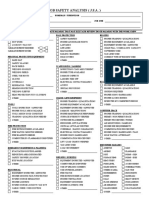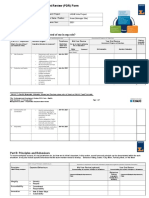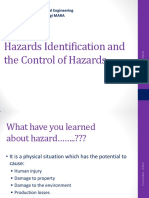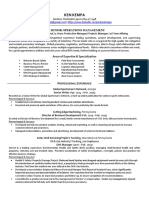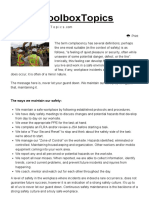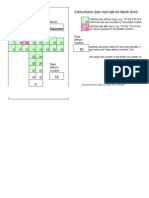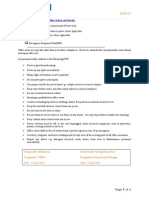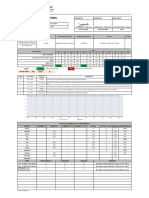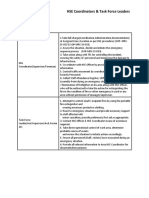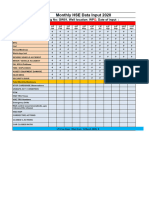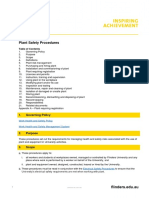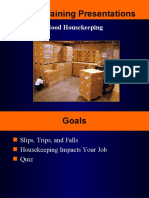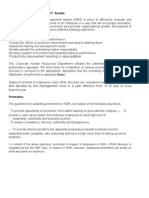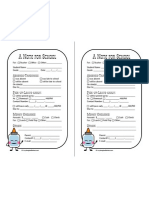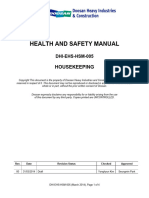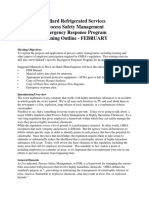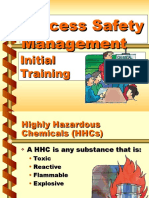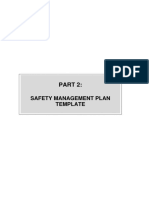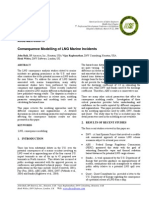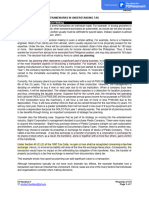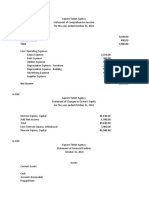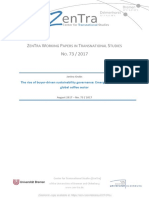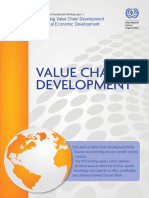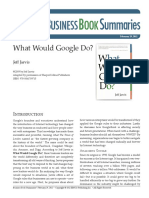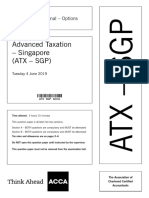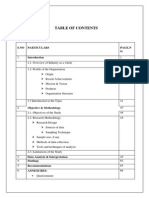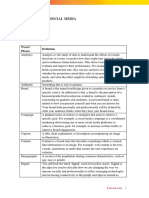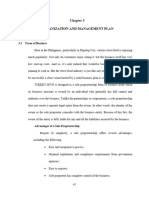0% found this document useful (0 votes)
144 views7 pagesProcess Safety Management Program
The document outlines the responsibilities and requirements of a Process Safety Management (PSM) program for an ammonia topping unit. It details 14 required PSM elements and provides an overview of the responsibilities, requirements, and documentation needed for each element. The elements include employee participation, process safety information, process hazard analysis, operating procedures, training, contractors, pre-startup safety reviews, mechanical integrity, and more.
Uploaded by
SPIDERMAB33Copyright
© © All Rights Reserved
We take content rights seriously. If you suspect this is your content, claim it here.
Available Formats
Download as PDF, TXT or read online on Scribd
0% found this document useful (0 votes)
144 views7 pagesProcess Safety Management Program
The document outlines the responsibilities and requirements of a Process Safety Management (PSM) program for an ammonia topping unit. It details 14 required PSM elements and provides an overview of the responsibilities, requirements, and documentation needed for each element. The elements include employee participation, process safety information, process hazard analysis, operating procedures, training, contractors, pre-startup safety reviews, mechanical integrity, and more.
Uploaded by
SPIDERMAB33Copyright
© © All Rights Reserved
We take content rights seriously. If you suspect this is your content, claim it here.
Available Formats
Download as PDF, TXT or read online on Scribd
/ 7

